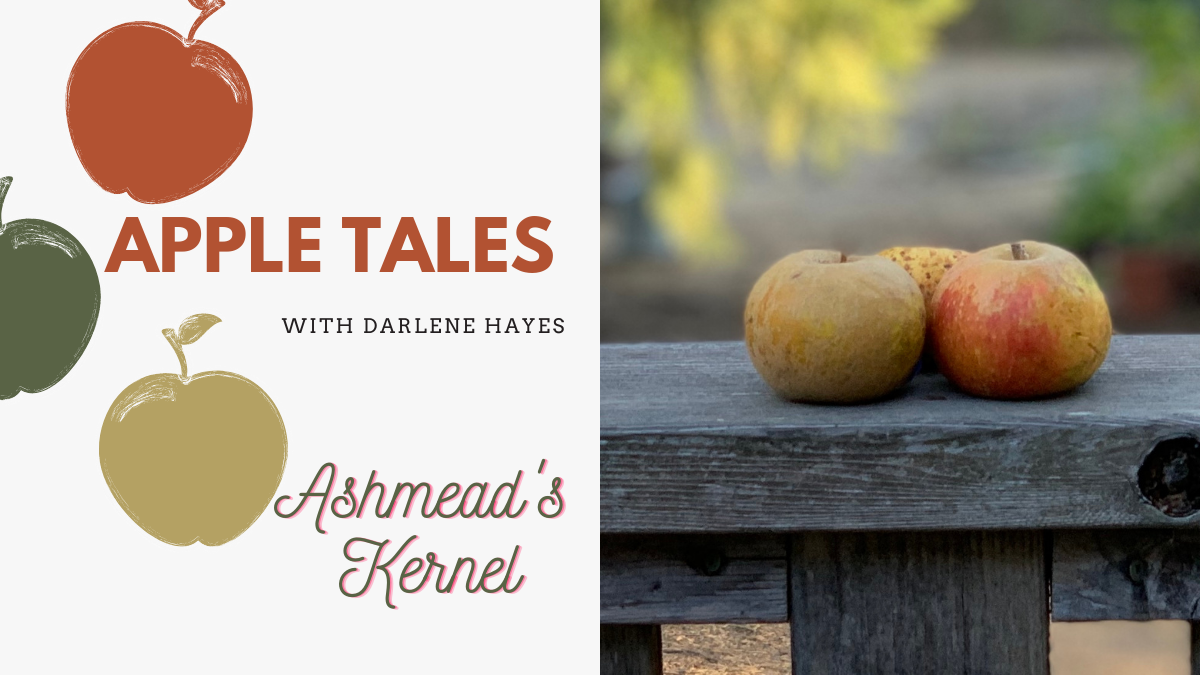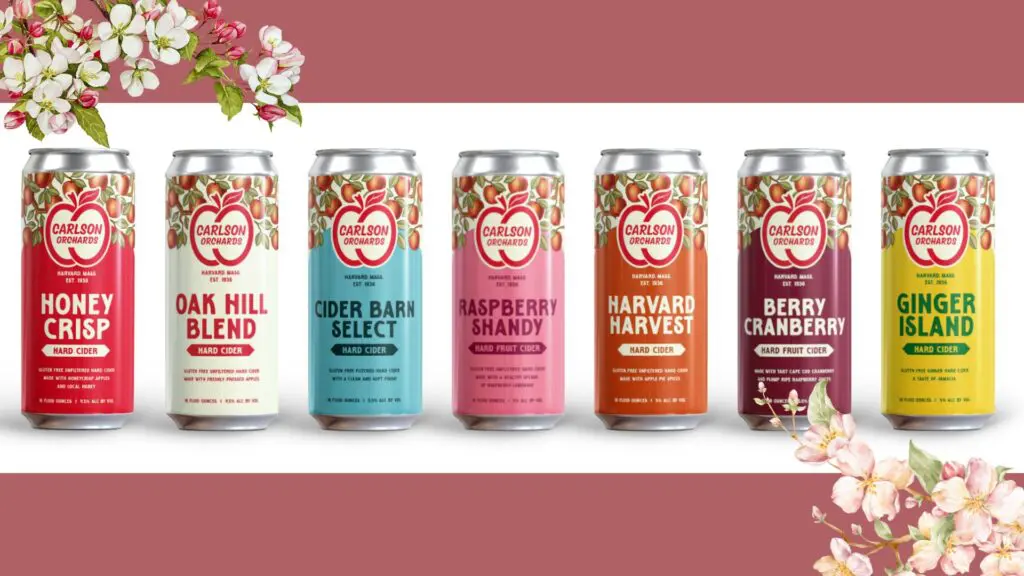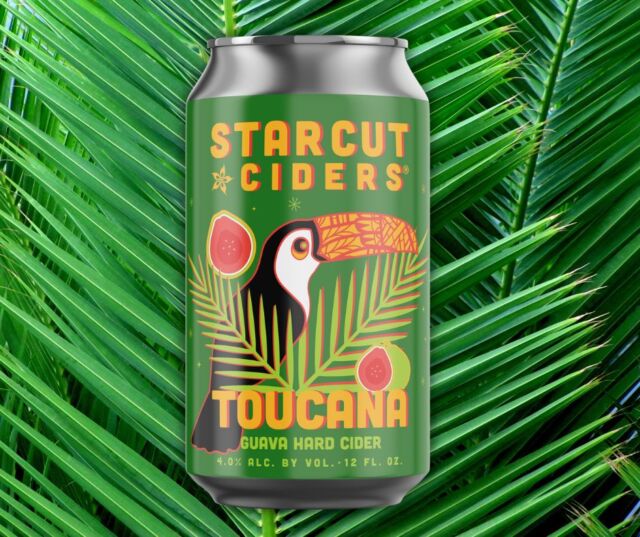Some stories don’t come that easily, and the Ashmead’s Kernel story turned out to be one of them. Though it has been much loved for a couple hundred years at least, the records that might shed some light on its origins are pretty thin. Here’s what we do know, though.
The tree that became Ashmead’s Kernel is believed to have been planted early in the 18th century. A hundred years later, writers attributed its origin to a Mr. Ashmead of Gloucester, a Dr. Ashmead of the Gloucestershire village of Ashmeads, or, splitting the difference, a Dr. Ashmead of Gloucester, “an eminent physician of that city.” Finally, in 1861, as part of a lecture with the title “What has our county done?” the Reverend Samuel Lysons gives Ashmead a first name: “William Ashmead, some time town clerk of this city [Gloucester], who planted the first tree near Clarence street.”
Helpful, but not much. There were any number of Ashmeads in and around Gloucester in the 18th century, several of whom were named William, none of whom were physicians. Most of the folks that care about such things in Gloucestershire today believe the William was an attorney and as such may have been a doctor of laws, which would account for the honorific. This particular William Ashmead was born in 1721, married Mary Jones in 1759 and died, childless, in 1782. Not much story there.
The late 18th century was a time when the English middle class was discovering the joys of gardening, a fervor fueled by the flood of new plants arriving in the country from around the world and new books that described them, as well as their home-grown cousins. Popular plant books began to appear in England in the 1760s, sparking an ardent interest in botanizing, meandering walks through the fields with guide in hand followed by exclamations of delight in finding a particular specimen. It was the perfect pastime for the well-bred young lady and a few like-minded friends.
One of those popular books was written by Gloucester nurseryman James Wheeler in 1763, around the same time that he began growing and selling trees grafted from Ashmead’s apple. Wheeler was part of the expansion of nurseries outside of London that catered to the middle class, those that had caught the gardening bug and wanted both plants and fruit trees for their gardens. He had connections with the London nurseries, for he sent Ashmead’s Kernel scions to arguably the best-known nursery, Brompton Park, in the 1780s. Without Wheeler’s intervention, Ashmead’s Kernel may well have ended its days as just another obscure local apple.
From Brompton Park it entered the ever-expanding collection of the Horticultural Society of London, appearing in their 1826 plant list, and started to make its way out into the wider world. A “Mr. Holbert’s Ashmead’s Kernels” won the dessert apple prize at the Vale of Evesham Horticultural and Floral Society competition in 1834. It was offered for sale by name in Manchester in 1835, and was being grown in New York by 1851. Ashmead’s Kernel never quite caught on in America the way it did in England, though, maybe because of a bias toward American varieties. It is certainly more widely grown today.
It isn’t a particularly large apple. Its ground color is green with a yellow overcast and flushings of orange or red, sometimes in stripes, on its sun side. It is always russeted to some degree, but its shape can vary considerably from round to oblate to conical.
As to flavor, Ashmead’s Kernel has very passionate fans. One of the best descriptions comes from a talk on apples given by journalist and food writer P. Morton Shand on BBC Radio in 1944. “What an apple, what suavity of aroma,” he said. “Its initial Madeira-like mellowness of flavour overlies a deeper honeyed nuttiness, crisply sweet not sugar sweet, but the succulence of a well-devilled marrow bone. Surely no apple of greater distinction or more perfect balance can ever have been raised anywhere on earth.”
How, then, does this well-loved dessert apple behave when fermented? The five we tried (I was joined by former Golden State Cider cidermaker Tim Godfrey) were all pretty tasty with a healthy dose of acid, no discernible tannin, and body that varied from some to a lot. Lime or some other tart citrus seemed to be the common flavor theme. What intrigued us the most, though, were the ones that were a little bit resiny, with aromas and flavors of fir or juniper. Most interesting.
Sundström Cider – Hudson Valley, N.Y.
Tasting notes: Dry; fir tips, juniper, ripe pear, lime juice, lychee, grapefruit; still
2016 | 10% ABV
South Hill Ciders – Ithaca, N.Y.
Tasting notes: Dry; grapefruit peel, fir tips, tropical fruit, citrus; sparkling
2019 | 10.7% ABV
Chatter Creek Cider – Seattle, Wash.
Tasting notes: Dry; lime zest, mint, menthol, juniper, plum skin, green apricot, citrus pith, green herbs; sparkling
2019 | 9.5% ABV
Haykin Family Cider – Aurora, Colo.
Tasting notes: semi-sweet; limeade, plum skin, mango, lemon juice and pith, grapefruit juice, cranberry; sparkling(Apples grown in Yakima, Wash.)
2017 | 7.3% ABV
Wise Bird Cider Co. – Lexington, Ky.
Tasting notes: Dry; green plum skin, pear skin, lemon juice, just ripe peach, grapefruit, lychee, green leaf; sparkling
2019 | 8.4% ABV





















